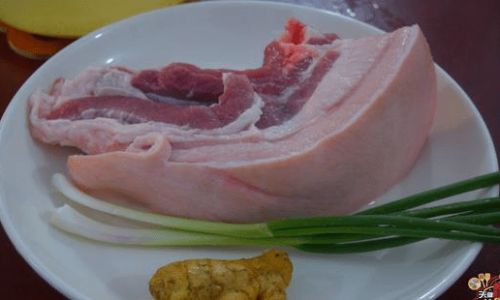Introduction

In the vast culinary landscape of global flavors, chili oil, or “you la zi” as it’s affectionately known in Chinese cuisine, stands out as a versatile and beloved condiment. Its fiery red hue, coupled with a complex blend of fragrant spices and oils, makes it an indispensable ingredient in numerous dishes, from noodles and dumplings to stir-fries and salads. But how do you craft a chili oil that is not only fiery hot but also aromatic and delicious, capable of elevating even the simplest of meals? This guide delves deep into the art of making chili oil, exploring the choice of chilies, oils, spices, and techniques that will help you achieve perfection.
Understanding the Ingredients
The Chili Peppers
The foundation of any chili oil lies in the peppers themselves. Different types of chilies bring unique flavors and heat levels to your final product. Here are some popular options:
- Arbol Chilies: Known for their bright red color and moderate heat, arbol chilies contribute a fiery punch without overwhelming the other flavors.
- Cayenne Peppers: These are extremely hot and provide a strong, lingering burn. They are often used in blends for those who prefer a more intense heat.
- Tianjin Chilies: These chilies are less spicy but offer a rich, fruity flavor and a beautiful red hue. They are ideal for adding depth without too much heat.
- Sichuan Peppercorns: While not a chili, Sichuan peppercorns are crucial for their unique, floral, and slightly numbing taste. They add a layer of complexity that sets Sichuan cuisine apart.
When selecting chilies, consider their heat level, color, and flavor profile. A blend of different chilies can create a balanced chili oil that is both visually appealing and flavorful.
The Oil
The oil you choose will greatly impact the taste and texture of your chili oil. Here are some key considerations:
- Neutral Oils: Vegetable, canola, or grapeseed oils are neutral in flavor and high in unsaturated fats, making them ideal for chili oil. They allow the flavors of the chilies and spices to shine without interference.
- Aromatic Oils: If you want an extra layer of flavor, consider using sesame oil or peanut oil. These oils have a nutty aroma and richness that can enhance the overall taste. However, use them sparingly as they can overpower the other ingredients if used excessively.
- Quality Matters: Always use high-quality, fresh oil. Old or rancid oil will ruin the taste of your chili oil.
Spices and Aromatics
The spices and aromatics you add will transform your chili oil from a basic condiment to a culinary masterpiece. Common ingredients include:
- Garlic: Adds a subtle sweetness and aroma.
- Ginger: Provides a fresh, slightly spicy flavor.
- Onion and Shallots: These add depth and a savory note.
- Star Anise, Cloves, and Cinnamon: These aromatic spices bring warmth and complexity.
- White Sesame Seeds: Toasted sesame seeds add crunch and a nutty flavor.
Feel free to experiment with different spices and aromatics to find a combination that suits your taste preferences.
Preparing the Ingredients

Before you start cooking, it’s essential to prepare your ingredients properly:
- Toast the Chilies and Spices: Toast your chilies and Sichuan peppercorns in a dry pan over medium heat until fragrant. This releases their oils and intensifies their flavors. Be careful not to burn them, as this will create a bitter taste.
- Grind the Chilies: Once toasted, let the chilies cool and then grind them to a coarse powder. You can use a mortar and pestle, a blender, or a spice grinder. A coarse grind is preferable as it retains some texture and bite.
- Prepare the Aromatics: Peel and finely chop the garlic, ginger, onion, and shallots. Toast the white sesame seeds until golden brown.
The Cooking Process
Now, let’s dive into the cooking process. This is where the magic happens, transforming your ingredients into a fragrant, delicious chili oil.
Step 1: Heat the Oil
Pour your chosen oil into a heavy-bottomed pot or wok. The pot should be large enough to allow for even heating without overflowing. Heat the oil over medium-low heat. The goal is to gently heat the oil without reaching smoking point, which can destroy its flavor and nutrients.
Step 2: Infuse the Aromatics
Once the oil is warm, add the chopped garlic, ginger, onion, and shallots. Cook them gently, stirring occasionally, until they are soft and fragrant. This process, known as “sautéing,” releases the natural oils and flavors of the aromatics into the oil.
Next, add the toasted spices like star anise, cloves, and cinnamon. Continue to cook for another few minutes, allowing the spices to infuse their flavors into the oil. The kitchen should now be filled with a wonderful aroma.
Step 3: Add the Chilies
Carefully add the ground chilies to the oil. Stir well to ensure the chilies are evenly distributed. The oil will bubble and splatter, so be cautious. Reduce the heat to low and let the mixture simmer gently for about 15-20 minutes. This allows the chilies to release their oils and flavors into the oil, creating a deep, rich color and flavor.
Step 4: Taste and Adjust

After simmering, remove the pot from heat and let it cool slightly. Taste the chili oil and adjust the seasoning if necessary. If you prefer a stronger chili flavor, you can add more ground chilies. For more heat, consider adding a pinch of cayenne pepper or crushed red pepper flakes.
Step 5: Strain the Oil
Once the chili oil has cooled to room temperature, it’s time to strain it. Line a fine-mesh sieve with cheesecloth or a coffee filter and place it over a clean, heatproof container. Pour the chili oil through the sieve, allowing the solids to be caught by the cloth while the clarified oil drips into the container.
Step 6: Store and Enjoy
Your chili oil is now ready to use! Pour it into a clean, airtight glass jar or bottle. Store it in a cool, dark place away from direct sunlight. Properly stored, chili oil can last for several months.
Serving and Using Your Chili Oil
Chili oil is incredibly versatile and can be used in a myriad of ways:
- As a Condiment: Drizzle it over noodles, rice, or stir-fries for an instant flavor boost.
- In Dressings: Add it to salad dressings or marinades for a spicy kick.
- For Dipping: Serve it as a dipping sauce for dumplings, spring rolls, or fried foods.
- Cooking: Use it as a cooking oil for stir-fries or sautés, adding heat and flavor to your dishes.
Tips for Perfect Chili Oil
- Experiment with Flavors: Don’t be afraid to experiment with different chilies, spices, and aromatics. The combinations are endless, and each will bring a unique flavor profile to your chili oil.
- Control the Heat: If you prefer less heat, reduce the amount of chilies or choose chilies with a lower heat level. Conversely, for those who love the burn, increase the chilies or add hotter varieties.
- Quality Ingredients: Always use fresh, high-quality ingredients. This will make a significant difference in the taste and shelf life of your chili oil.
- Storage: Proper storage is key to preserving the flavor and freshness of your chili oil. Store it in a cool, dark place in an airtight container.
Conclusion
Making your own chili oil is a rewarding culinary endeavor that not only saves money but also allows you to customize the flavors to your liking. By carefully selecting and preparing your ingredients, and following the steps outlined in this guide, you can create a chili oil that is aromatic, delicious, and bursting with flavor. Whether you’re a seasoned chef or a home cook, mastering the art of chili oil will elevate your dishes and bring a touch of culinary magic to your kitchen. So, gather your ingredients, roll up your sleeves, and start crafting your own batch of aromatic and delicious chili oil today!





0 comments